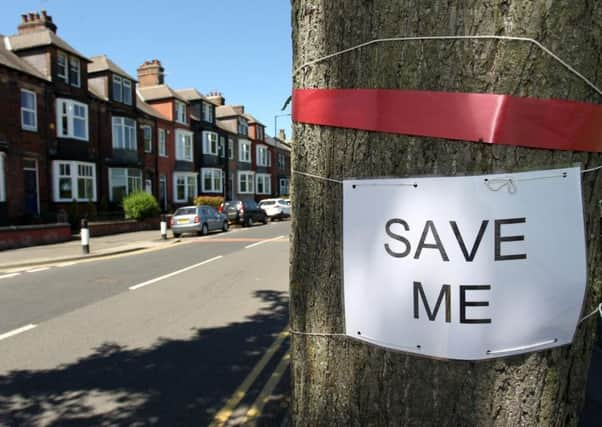Impact assessment


They then state that felling thousands of healthy, structurally sound, mature highway trees is justified on the basis that one tree is planted for every tree felled, claiming that the work is necessary to avoid catastrophic losses over a short time period in the future – for the benefit of future generations.
You may believe the council’s reasoning to be fair and their acts and omissions to be justified. In both cases, you would be wrong.
Advertisement
Hide AdAdvertisement
Hide AdManaging a tree population for the benefit of communities requires a responsible approach that has sustainability as a primary aim.
Until February 3, 2016, the council and Amey had always stated that there are more than 2 million trees in the city. Since then, a figure of 4 million has been repeatedly quoted.
This is important because, previously, the council claimed that the UK Forestry Standard did not apply to the highway tree population. However, the council have previously claimed that Sheffield is “10.4 per cent woodland by area”.
Jeremy Gunton is the council’s tree officer; one of two men responsible for drafting the long-awaited first tree strategy for the city – now eight months overdue.
Advertisement
Hide AdAdvertisement
Hide AdHe explained to me that the figures were “just estimates”. He informed that the 4m figure includes 2.2m trees managed by the council, with the remainder being an estimate of the number of trees in private ownership.
Trees outside woodland – such as highway trees – have considerably larger crowns than trees in woodland, so they contribute significantly more to canopy cover.
In light of the 10.4 per cent claim, assuming it is reasonably accurate, it is reasonable to assume that the city’s canopy cover is likely to be more than 30 per cent.
That means that Sheffield certainly does have an “urban forest” and that the highway tree population is a key component of the urban forest.
Advertisement
Hide AdAdvertisement
Hide AdThe UKFS and its guidelines do apply to all tree populations within the urban forest and the UKFS requires that they be managed sustainably.
These functions are fulfilled through the provision of a range of valuable ecosystem service benefits that canopy cover affords to the environment (neighbourhoods) and communities (including people).
The range, magnitude and value of these benefits is dependent on the shape, size and distribution of canopy cover.
The Streets Ahead plan, to fell up to half the population of highway trees (17,528 mature trees), will have reasonably foreseeable, highly likely, significant, negative impacts.
Advertisement
Hide AdAdvertisement
Hide AdMore than 3,800 mature highway trees have been felled since August 2012.
It is not a sustainable approach. Contrary to a range of current good practice guidance and recommendations, the Streets Ahead team has neglected to account for these benefits in cost-benefit analyses or risk assessments.
The necessity to have some form of adequate environmental impact assessment is self-evident and indisputable.
D Long (BSc Hons Arb)
by email